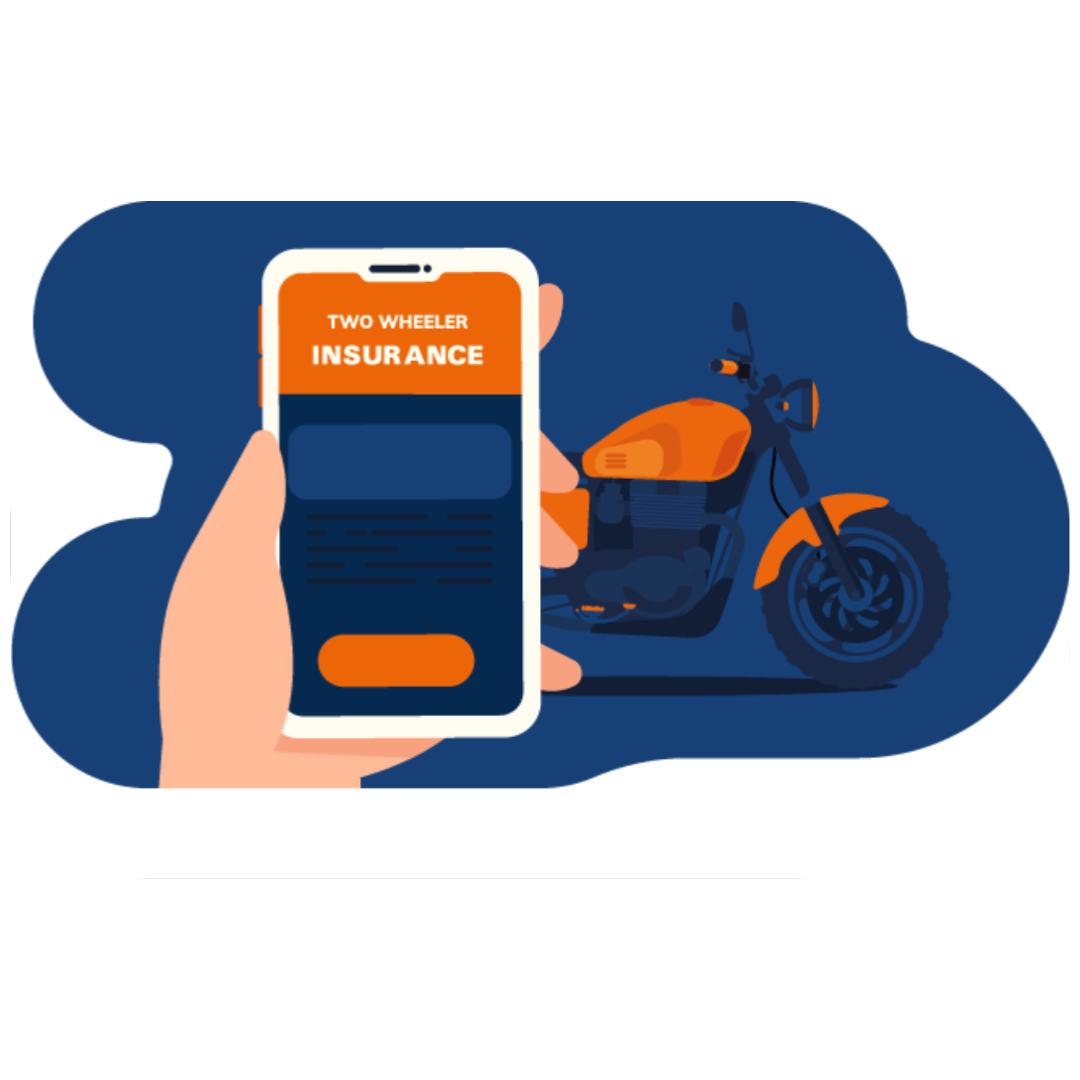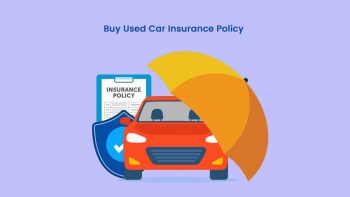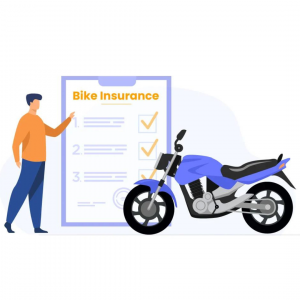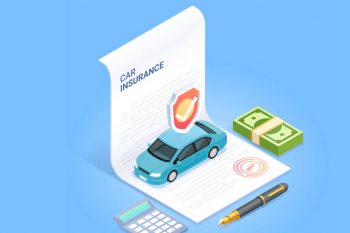Two-wheeler insurance is a type of policy that focuses on providing bikes with coverage and security. In the event that your bike sustains unintentional damage, it pays for repairs. In addition to protecting against accidents, it also offers financial security against third-party obligations and events such as theft, natural disasters, vandalism, etc.
What are the different types of Bike Insurance Policies?
1. Comprehensive Policy:
This two-wheeler insurance plan shields the owner from financial burdens resulting from unintentional harm to their own vehicle and third parties. You can also choose add-ons to improve your coverage under such a policy by paying a small additional fee. At a little higher cost, it also offers you a ₹15 lakh personal accident policy that covers accidental death and disability.
For whom is it appropriate?
If your two-wheeler is currently covered by an active third-party policy.
What does it cover?
- Accident
- Damage in transit
- Theft
- Third Party Liability
- Fire
- Personal Accident
- Natural Calamities
- Add – ons
2. Standalone Own Damage Policy:
The damages to your bike or scooter caused by man-made catastrophes such as theft, burglary, riot, strike, etc., or natural disasters such as earthquakes, floods, cyclones, landslides, etc. are covered by our stand-alone own damage two-wheeler insurance plan.
For whom is it appropriate?
If your two-wheeler is currently covered by an active third-party policy.
What does it cover?
- Accident
- Natural Calamities
- Theft
- Damage in Transit
- Fire
- Add-ons
3. Third Party Cover:
The damages to your bike or scooter caused by man-made catastrophes such as theft, burglary, riot, strike, etc., or natural disasters such as earthquakes, floods, cyclones, landslides, etc. are covered by our stand-alone own damage two-wheeler insurance plan.
Who is it suitable for?
It is not advised for any bike owner to have this kind of policy. Your bike is still at risk of theft, fire, parking accidents, and other hazards even if it is left idle in a parking spot. Only give this some thought if you don’t mind having to spend cash for bike repairs.
What does it cover?
- Third party property damage
- Injury to the third party
BENEFITS OF HAVING A BIKE INSURANCE
Biking and owning a bike has several benefits. For instance, a two-wheeler is far easier and less expensive to purchase and maintain than a car. Notwithstanding these benefits, riding a bike in poor road conditions and with plenty of traffic is very risky. Additionally, unruly driving by other people, inclement weather, and spills on the road can cause damage to you and your car. Not to add that in recent years, bike theft has become a major issue. Therefore, getting a dependable bike insurance policy is more essential. The following are some advantages of two-wheeler insurance:
- Financial Protection
- Roadside Assistance
- Coverage for spare parts required in repairs
- Coverage for bike theft
- Coverage for accidental injuries
What is covered in a two-wheeler package insurance policy?
1. Inclusions
- Loss of damage to your two wheeler due to natural disasters :- Fire, explosion, self-ignition or lightning, earthquake, flood, typhoon, hurricane, storm, tempest, inundation, cyclone, hailstorm, frost, landslide, rockslide.
- Personal Accident Cover :- Rs. 15 lakh cover for the registered owner-driver of the bike or scooter while traveling in, getting on or off the two-wheeler. You can also buy optional personal accident cover for co-passengers by paying an extra premium.
- Loss or harm to your two wheeler against man-made disasters :- Burglary, theft, riot, strike, malicious act, accident by external means, terrorist activity, any damage in transit by road, rail, inland waterway, lift, elevator or air.
- Third party legal liability :- Protection against legal liability due to accidental damages resulting in the injury or death of a person or damage caused to the surrounding property.
KEY FEATURES OF TWO WHEELER INSURANCE POLICY
- Liability Coverage
- Own Damage cover
- Personal Accident cover
- Add-on Covers
- No Claim Bonus
- Cashless Network Garages
REASONS TO BUY BIKE INSURANCE ONLINE
It’s as simple to order food online as it is to purchase and manage bike insurance. The outstanding IT infrastructure provided by any insurance broker enables you to purchase two-wheeler insurance online. When purchasing an online policy, this provides you with a number of benefits. Among them are:
- Instant quote
- Instant policy issuance
- Customizing plan as per your needs
- Transparency in process
- Simple renewal
- 24/7 online support
- Easy payment
How to choose the right bike insurance policy?
Careful consideration must go into choosing the appropriate policy. Knowing what to look for, what would be best for you, and attempting to strike a balance between the two is the key to doing so successfully. The following are some things to consider while choosing a quality two-wheeler insurance policy:
- Coverage – type of policy, IDV, add-ons
- Cashless garage network
- Claim servicing
- Claim settlement ratio
- Customer feedback
How to effectively compare bike insurance premium?
Everybody enjoys a good deal, and insurance premiums are no different. On the surface, a bike insurance quote could seem good, but before deciding, check it more closely to make sure there are no surprises when it comes time to file a claim. Here’s how to accomplish it step-by-step:
- Premium Break-up :- Request a premium breakup and examine the individual parts more closely.
- Own Damage Premium :- In your split, look for own damage premium. This is the actual coverage for theft, damage, and repairs to your bike. Know that your accidental damages will not be covered by the policy if you are unable to locate it.
When determining if you qualify for OD premium, consider the following two factors:
- IDV: Value Declared (IDV) for insurance. Should the IDV coverage be insufficient, your premium will be minimal.
- NCB: The NCB is the savings you receive in the event that your prior insurance year was claim-free. You must renew your insurance within ninety days of its expiration in order to qualify for this. It’s important to remember that while NCB lowers your premium, choosing the wrong NCB can result in claim denial just when you need it most. Therefore, purchase real coverage that will support you during your time of need.
- Third – party premium :- This coverage safeguards you in the event that an accident occurs and you injure a third party.
- Coverage for third party property damage up to ₹1 lakh.
- Unlimited coverage in the event that someone else passes away or becomes disabled. The court determines this sum.
This premium is the same for all insurance providers.
- Personal Accident premium :- For the driver who owns the car, personal accident insurance is required. This is a cover for a single person. Therefore, even if you own several cars, you only need one of these covers.
- Add-On Premium :- Verify if the break-up has the add-ons you requested. This will guarantee that you receive the coverage you have requested and that you understand the cost of those services.
WHY IS BIKE INSURANCE NECESSARY?
Numerous coverage options provided by bike insurance might save you a significant amount of money and time. These include personal accident insurance, covering for fixing unintentional damage to your bike, and much more. Second, it is required to have insurance when operating any kind of vehicle. If you are discovered riding a bike without insurance, you could face a ₹2,000 fine and/or jail time.
WHAT IS NCB IN BIKE INSURANCE?
No claim bonus, or NCB for short, is an additional benefit included with a bike insurance policy. According to this advantage, you will receive a bonus for every year that you have a policy without filing a claim. In this manner, as each year goes by, the cost of insurance is ultimately decreased. Additionally, the incentive percentage increases to 50% after consecutive claim-free years. Therefore, if you don’t file a claim, you can receive a no claim bonus equal to a maximum of 50% of your premium.
WHAT IS IDV IN BIKE INSURANCE?
Often referred to as insured declared value, or IDV, is the maximum sum of money that an insurance company would guarantee a policyholder in the event that their bike is stolen or suffers irreparable damage in an accident. This amount is determined by the bike’s market value at the time the insurance was purchased. With each renewal of the policy, the IDV typically drops due to depreciation.
WHAT IMPACTS THE INSURED’S DECLARED VALUE (IDV)?
Your bike’s market value is effectively an IDV under your insurance. Because of this, the policy’s premium is also based on the IDV. In turn, there are two elements that affect the IDV. These comprise the vehicle’s selling price and its rate of depreciation. There won’t be any confusion because the selling price of your bike will be set. But with every year that goes by, a depreciation rate will reduce the worth of your bike relative to its purchase price. Your bike’s market worth is represented by this new figure. IDV will decrease as your bike depreciates more because it is effectively a payment of your market value in the event of a total loss of the vehicle.
HOW TO SAVE ON BIKE INSURANCE PREMIUM?
Saving money is insurance’s main objective. Why should that notion alter when purchasing an insurance policy, then? Here are some tips to help you save money on your premium without sacrificing coverage. Among them are:
- Claiming NCB benefit: It is uncommon that you will have to make a claim if you are a careful driver. Make the most of it by taking advantage of your NCB benefit.
- Installing Safety Devices: Your car is less likely to be stolen if safety measures are installed. Because of the decreased risk, the premium offered by the insurer is probably going to be lower.
- Compare Plans: Comparing various policies is the best approach to obtain bike insurance at an inexpensive price.
FAQS
Q1. What factors affect the cost of bike insurance premiums?
A1. Several factors influence bike insurance premiums, including the type of coverage, the insured declared value (IDV) of the bike, the rider’s age and driving history, the make and model of the bike, and the location where it is primarily used or parked.
Q2. Can I transfer my bike insurance policy if I sell my bike?
A2. Yes, bike insurance policies can be transferred to the new owner when you sell your bike. You need to inform the insurance company about the sale and provide the necessary documentation. They will guide you through the transfer process, and the new owner can continue with the existing policy or opt for a new one.
Q3. What should I do if my bike is stolen?
A3. In the unfortunate event of your bike being stolen, you should immediately file a police report and inform your insurance provider. They will guide you through the claims process, which typically involves providing proof of ownership, the police report, and any other required documentation. Once the claim is approved, you may receive compensation based on the terms of your policy.
Q4. Can I renew my bike insurance policy after it has expired?
A4. Yes, you can renew your bike insurance policy even after it has expired. However, it’s advisable to renew it before the expiration date to avoid any lapse in coverage. If your policy has expired, you may need to undergo a vehicle inspection, and there could be penalties or restrictions imposed by the insurer.
Q5. Are there any discounts available for bike insurance premiums?
A5. Yes, insurance companies often offer discounts to policyholders based on various factors. These may include a no-claim bonus (NCB) for claim-free years, installing safety devices on your bike, being a member of certain organizations, or bundling multiple insurance policies with the same provider.
Q6. What should I do if I’m involved in an accident?
A6. If you’re involved in an accident, first ensure the safety of yourself and others involved. Then, exchange contact and insurance information with the other party/parties involved. It’s crucial to inform your insurance provider as soon as possible and provide them with all relevant details and documentation, including photos of the accident scene and any injuries or damages. They will guide you through the claims process and arrange for repairs or compensation as per your policy coverage.











